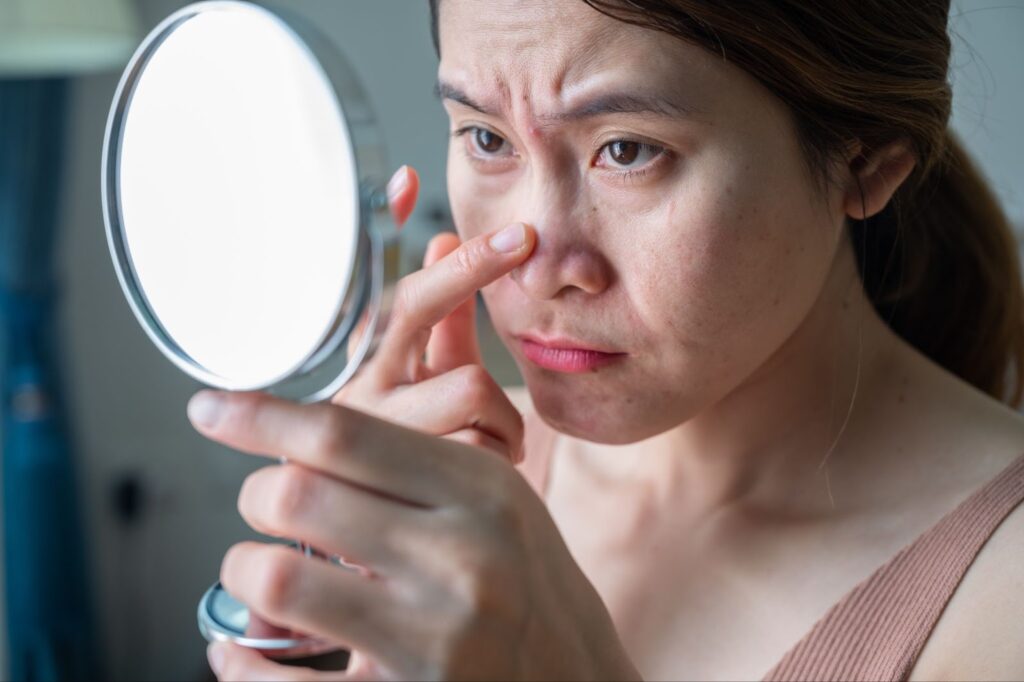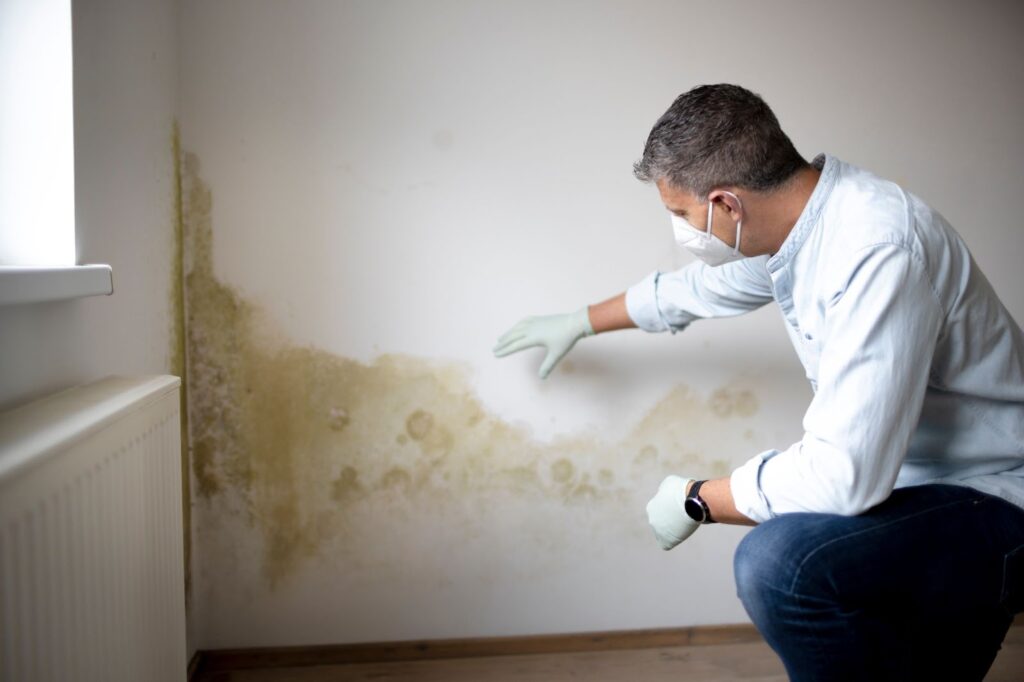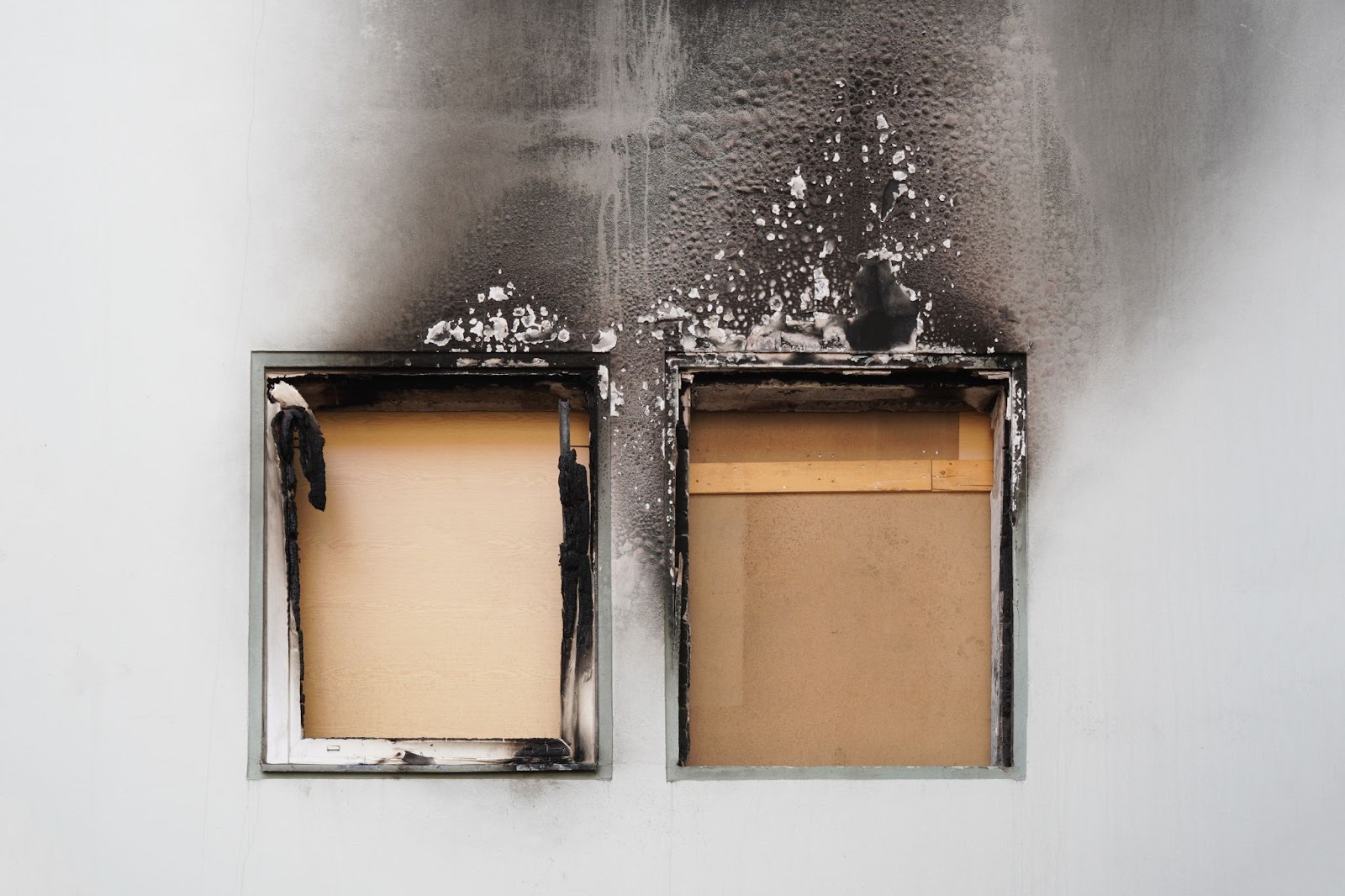Living with smoke damage in your home is not only unsightly, but it also poses insidious and lingering risks to your health and your property.
The immediate and visible destruction after a fire is obvious; however, the haunting danger of smoke damage might go unnoticed. Smoke can infiltrate every nook and cranny, leaving behind a trail of potential hazards. Smoke damage awareness is the best way to protect yourself in the aftermath of a fire.
Continue reading as we dive into the importance of addressing smoke and soot hazards for the well-being of both your property and your health.
Understanding smoke and soot composition
Before expanding on smoke damage awareness, you must first understand its composition. Smoke is a complex mixture of particles, gases, and chemicals produced when materials burn. It contains carbon monoxide, carbon dioxide, water vapor, particulate matter, and a multitude of toxic substances. Smoke typically spreads through the air.
Soot, on the other hand, specifically refers to the fine black or brown powder composed of carbon particles. This results from the incomplete combustion of organic matter. Soot tends to settle on surfaces and leaves behind a dark residue. While the immediate threat of fire subsides once extinguished, the aftermath of smoke and soot damage poses a silent threat.
The dangers of smoke and soot
Residual smoke and soot after a fire go beyond being a smelly nuisance; they can harm your health and property long-term. Children, the elderly, and those with weakened immune systems face higher risks from exposure. Once soot enters your bloodstream, it can cause a range of serious health problems, including bronchitis, asthma, stroke, cancer, and premature death.
Recognizing the dangers of smoke and soot dates back to the 18th century, marked by the British Parliament’s Chimney Sweepers Act. This was in response to the association of smoke and soot with cancer. This has the distinction of being the first reported form of occupational cancer.
Respiratory problems
One of the most pressing concerns associated with smoke damage in homes is the impact on respiratory health. Inhaling smoke particles can irritate the respiratory system, leading to a range of issues. Vulnerable populations, such as children, the elderly, and those with pre-existing respiratory conditions, are at an increased risk.
Prolonged smoke exposure can contribute to the development of chronic health conditions and exacerbate existing ones. Here are some of the most common respiratory issues associated with smoke and soot inhalation:
- Coughing and throat irritation
- Shortness of breath
- Hoarseness or noisy breathing
- Bronchitis
- Pneumonia
- Respiratory infections
- Aggravation of asthma
- Chronic Obstructive Pulmonary Disease (COPD)
- Wheezing
Skin issues
Smoke and soot can also pose issues to the skin. This residue can be a skin irritant and cause lasting damage. This irritation is often too severe to be treated with common household products like lotion. In some cases, these problems can end up requiring medical attention. Even after a shower and laundering your clothes after a fire, lingering smoke remnants can persist.
If you experience redness, itching, dryness, pigmentation changes, or allergic reactions, this could be a sign of hidden smoke damage. Thorough cleaning, moisturization, and consultation with a dermatologist are recommended to address skin issues. Additionally, prompt smoke damage restoration can help alleviate skin issues associated with smoke and soot damage.

Eye irritation
Eye irritation is another common hidden symptom caused by smoke and soot. Itchy, red, dry, or watery eyes can persist due to fine smoke particles in the air. The chemical composition of smoke also includes various irritants such as formaldehyde and ammonia. When these chemicals encounter the eyes, it can be quite uncomfortable.
Those with pre-existing eye conditions might experience exacerbation of their symptoms when exposed to smoke as well. Smoke can intensify existing eye issues such as dry eye syndrome or conjunctivitis. Wearing protective eyewear can help alleviate these conditions. Prioritize smoke damage restoration and consult with a medical professional for the best treatment plan.
Structural damage
Your property is just as susceptible to lasting damage after a fire as your health. Smoke and soot will significantly weaken the structural integrity of your home over time. It can deteriorate materials, cause corrosion of metal components, and trap moisture inside. It can also accumulate smoke deposition, which affects the load-bearing functions of support beams.
Prompt and thorough remediation is essential to mitigate the structural implications of smoke and soot damage. Professional restoration services can assess the extent of the damage, conduct a comprehensive cleaning of affected areas, and apply measures to prevent further deterioration.
Odor permeation
Smoke and soot are highly stubborn when it comes to smells. The lingering odor of smoke is persistent and all-consuming when it permeates the materials and furnishings of your home. Only full restoration can remove these heavy odors for good.
Professionals will implement a systematic approach to banishing unwanted smoke odors:
1. Professional assessment- Professionals will evaluate the extent of smoke damage and develop a targeted remediation plan.
2. Deep cleaning- Experts will deep clean both porous and non-porous surfaces. They will also conduct specialized treatments for items that are difficult to clean conventionally, such as upholstered furniture, drapes, and intricate electronic devices.
3. HVAC system cleaning- Cleaning and deodorizing the HVAC system is essential to prevent the continued circulation of odors. This involves cleaning ductwork, replacing filters, and treating HVAC components.
4. Sealing surfaces- Sealing porous surfaces in some cases might be necessary to prevent the re-emergence of odors. For instance, if a home has exposed wooden beams that absorb smoke particles, a specialized sealant prevents trapped odor molecules from escaping and permeating the surrounding air.
5. Hydroxyl generators- Although uncommon, hydroxyl or ozone generators are sometimes used to combat heavy smoke odors. These generators release radicals into the air that neutralize odor molecules.
Erosion and corrosion
Smoke and metal are not friends. The acidic residue of smoke is extremely damaging to metal surfaces, triggering corrosion and material erosion. This corrosion not only compromises the structural integrity of metal surfaces but also contributes to material erosion over time.

Mold growth
Mold growth is another common consequence of soot and smoke damage. The combination of residual moisture, organic matter, and porous building materials creates an ideal environment for mold to thrive.
Proper smoke damage awareness can help you prevent mold growth after a fire. Hire professional cleaners who will dry and dehumidify the area, remove any contaminated materials, and ensure proper ventilation to promote air circulation. Periodic monitoring of the remediated areas is also essential to spot any signs of mold resurgence.
Electrical problems
The crevices that smoke and soot can infiltrate are truly endless — not even your electrical system is safe. Smoke damage can lead to various electrical problems within a property. The corrosive nature of smoke residues poses several risks, including corrosion of wiring, compromised electrical insulation, damage to electrical components, short circuits, and more.
Professional smoke damage restoration teams will conduct a thorough inspection of the electrical system and restore it back to normal. These teams will assess, clean, and repair all affected components quickly and safely.
Lower property value
Unfortunately, the residual damage from a fire can lead to lower property value if left untreated. You might have trouble selling a home in a competitive market because of the effects of smoke and soot, as it affects both the structural integrity and aesthetic appeal of a home.
Buyers might also be concerned about potential health and safety risks. Smoke damage can make a property less desirable even if odors are removed. If you have gone through proper remediation channels, you’ll need to show proof of these procedures to ease buyers’ minds.
If you’re selling your home that once suffered from smoke and soot damage, transparent communication is key. Disclose any past smoke damage, the steps taken for remediation, and provide assurances regarding the property’s current condition.
Insurance complications
Like other home catastrophes, delaying the resolution of issues can result in trouble with insurance claims. Insurance providers may deny a claim due to perceived negligence. As such, contact your insurance company promptly if your home has experienced fire damage. Contacting your agent and reviewing your coverage should be one of the first steps taken after a fire.
Hire Black Diamond Restoration for smoke damage remediation today
At this point, you might be thinking, “Is there anything smoke can’t damage?” While it seems that smoke has the potential to affect almost every aspect of a property, understanding its impacts allows for strategic remediation efforts.
If you’re battling tenacious soot and smoke damage in your home, the experts at Black Diamond Restoration are here to help. We are a market leader in fire damage remediation. You can trust our certified experts to get the job done quickly and efficiently.
We offer comprehensive, professional services to homeowners and businesses alike. If your property has suffered fire damage, contact Black Diamond Restoration today! Contact us online or call 801-383-0964 to learn more.







